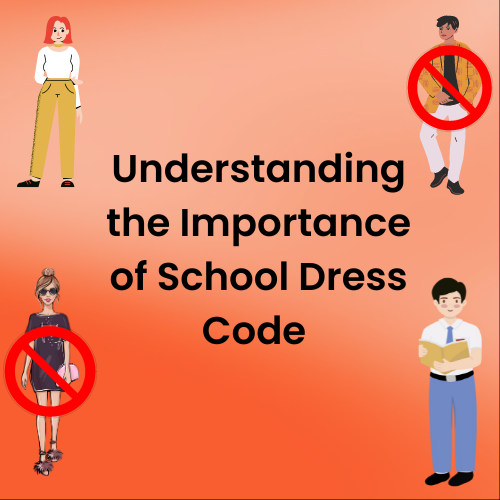Unveiling Professionalism: Understanding the Importance of School Dress Code

Each school will have its own specific policy on dress code, but they will all be very similar in the high expectations they expect you to set to the pupils, remember leading by example is key! This blog is designed to give you an insight into what to expect and to ensure you are prepared for your first day in a school with rTriibe.
Implementation of the Dress Code: This dress code guidance is to help you understand the standards of dress and appearance accepted by schools. All schools expect staff to maintain a professional appearance both within the school premises and when representing the school externally. This is not an exhaustive list of acceptable and unacceptable standards of dress but does provide you with enough information to use your judgement while adhering to the principles underlying the dress codes of the schools. Schools will acknowledge the diversity of cultures, religions, and disabilities among its staff and will adopt a sensitive approach when addressing dress requirements, with priority given to health, safety, and security considerations.
Responsibilities: Each staff member is individually responsible for their overall presentation, appearance, and personal hygiene, taking into consideration how it may be perceived by others. Staff should adhere to the following guidelines when selecting their attire: it should be appropriate to their role, not likely to be offensive, revealing, or sexually provocative, devoid of political or contentious slogans, non-discriminatory, culturally sensitive, compliant with health and safety requirements, and not pose any risks to themselves or others.
Please check out our TikTok, where the rTriibe team has demonstrated what is considered acceptable and unacceptable in a school-based environment
Dress Code:
Acceptable Clothing: Options include appropriate length skirts or trousers (minimum knee length), blouses/shirts (long or short sleeve), smart plain T-shirts/polo shirts, jumpers, jackets, dresses, business suits, and ties.
Non-acceptable Clothing: Mini-skirts, lycra cycling shorts, leggings, or footless tights, leisure shorts (unless for PE or sports), tracksuits (unless for PE or sports), trainers (unless for PE or sports), see-through clothing, torn, holey, or unclean clothing, low-cut T-shirts or blouses, vest tops, crop tops, offensive badges, emblems, or logos on clothes, indoor wearing of baseball caps, flip flops, open-toe and open-heel sandals, and visible underwear.
Exceptions: Schools dress codes will acknowledge that certain occasions may warrant a deviation from the usual dress code, such as outdoor or residential visits. In such circumstances, specific guidance will be provided to you by the school in advance. Role-specific exceptions may also apply, such as caretakers wearing boiler suits or cleaners wearing overalls. The dress code may be relaxed on training days at the discretion of the Headteacher, if you are partaking in training days whilst on supply, do not assume there is a relaxed dress code, always check beforehand.
Footwear: Footwear must be safe, sensible, in good repair, and clean. Staff members should consider health and safety implications, as they may need to move swiftly in emergency situations.
Tattoos: Visible tattoos are discouraged, and if present, they should not be offensive to others. Offensive or inappropriate tattoos must be appropriately covered.
Jewellery and Piercing: jewellery should be discreet, appropriate, and not pose a health and safety hazard. Where jewellery or piercings present a risk to health and safety or their appearance is deemed inappropriate in the school setting, they should be removed. During PE lessons, jewellery should be removed, covered, or taped up as necessary. Facial piercings are not permitted.
Hair: Hair and beards should not compromise health and safety. Long hair should be tied back when handling food. Beards should be neatly trimmed unless required by an individual’s religion, in which case they must be tidy.
Religious Dress: Religious dress is permitted, taking into account health and safety and communication considerations.
rTriibe hope that you have found this information informative and helpful but if you have any further questions, please contact your consultant for further advice.